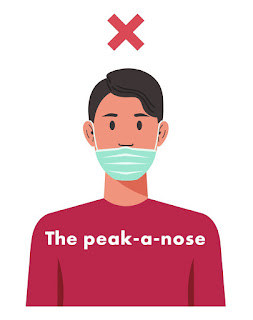Now that covid-19 has hit I have done some serious research into how to prevent the spread from me to you, your family and your home. Wearing a mask is one of the simplest ways to protect myself from breathing in any germs and stopping my saliva from spreading. I also sanitise my hands before leaving my vehicle to kill any germs so I don't transfer them to your home. I also have a non-rinse sanitiser to use on any hard surface I touch, this sanitiser is proven effective against the coronavirus.
Along with the research I have done I have completed some online learning to further my knowledge on basic infection control of covid-19 and how to control the spread in the workplace (or at your home).
These two certificates cover covid-19 and how to control it. The first one is quite basic and covers basic control of the virus and is free and I encourage you to all complete it (it only takes 30mins). The second one is via Deakin Uni medical school and produced by DeakinCo. This one is more comprehensive and covers how to control covid-19 in your workplace, going through how you should wash your hands, proper wearing of your mask (putting them on and taking them off) and regular sanitising of regularly touched surfaces.
There are some basics to wearing a mask and I have seen many wearing them improperly. The basic blue mask (the one doctors wear) is a single use mask which can be used for 4hrs at a time. They are not intended to be put on and taken off more then once, once they are on that is it.
The masks with filters or N95 masks can be used for around 8hrs at a time before the valve is to moist from your breath and should be air dried. Some of these have 3 layers with the middle layer being a filter that can be changed after a couple of days use. These masks will filter out small particles and better protect you against the virus but are not intended to be washed and reused over and over.
One of the most common masks you will see are the painters dust masks. These are cheap, can be use multiple times (allow to air dry between uses) but don't really filter out any small particles. These are more designed for filtering out dust particles but can filter out the larger saliva particles that can be spread during normal talking. These ones typically have no valve so all the breath you breath out is trapped in the mask.
There is increasing popularity of fabric masks, these can come in a huge variety of styles and colours. They can have multiple layers and even a space to insert a filter. They have up to 3 layers of fabric to help stop the spread of any airborne germs from person to person. The more layers the better at stopping germs spreading from one person to another.
Lastly there are spray painters masks, these can filter out very small particles and germs with the right filters. These masks can be used over and over and have valves to allow any spend breath to be expelled into the air after going through the filter. These are the best at stopping the spread but are the most expensive and not practical for every day use. They should be limited to use where you need to see or be around someone that has a confirmed case or symptoms of covid-19.
Now I will go through the proper way to wear your mask so you give yourself every chance to not catch any covid-19 germs while out and about.
Before putting on your mask you should wash your hands (for at least 20 seconds) with soap and water (or use hand sanitiser if no running water available) so you don't contaminate you mask. This helps eliminate any chance of any bugs getting on your mask before it makes contact with your face. You should only touch it by the sides (the loops that go around your ears) as to not touch any of the part that covers your face.
After you take your mask off you should again wash your hands or use hand sanitiser as your mask will have come into contact with some airborne germs.
You should never lower your mask to sit around your chin or neck.
There will be germs that accumulate around your chin and will contaminate your mask. If you do need to take it off for any reason then it come completely off.
You should also make sure your mask has adequate pressure all around to have a good seal to provide the best possible protection. If it has a metal nose piece it should be presses tight to provide a tight seal so your breath doesn't end up fogging up your glasses.
And absolutely no peak a nose, your mask should cover your nose at all times to be effective.
I hope this information is useful to you and your family and you use it to wear a mask properly to minimise the spread. We don't want to have to go into stage 4 restrictions as that would mean almost all of us would be staying at home and my small handyman business will not be making any money.












No comments:
Post a Comment